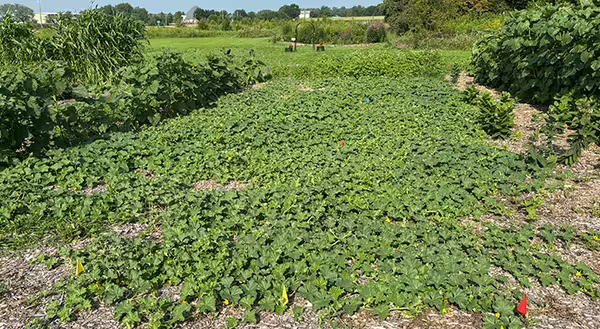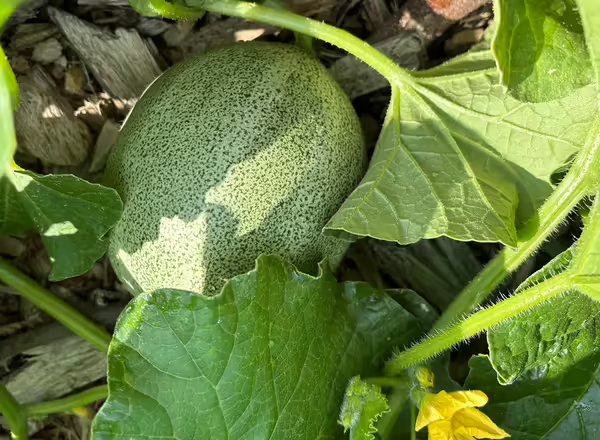
In early June, three cantaloupe varieties were planted under un-irrigated woodchip mulch to measure fruit quality and marketability in Northern Illinois. Varieties selected were ‘Hales Best Jumbo’, ‘Hearts of Gold’, and ‘Honey Rock’, all sourced and donated from Livingston seeds. The field was weeded on May 30 prior to melon planting, weeds identified were curly dock, canada thistle, common milkweed, crabgrass and barnyard grass. Canada thistle populations were more persistent compared to other broadleaf weeds, due to the field being unmanaged for 10 years. Melons were planted into the field on June 5 and were hand-watered every day for seven days. After the initial week of planting and watering, conditions have remained unirrigated and rely on rainfall and woodchips to hold moisture into the soil. Pest scouting for squash bugs and cucumber beetles occurred on June 26 and July 8, no squash bugs were noticed on either date and cucumber beetle populations remained low. Another pest scouting and weeding day will occur in August.


About one month after planting on July 8, melon growth was slow with very little flowers forming. After a heavy rainfall on July 11, melon plants began to mature at a steady pace. On July 18, female flowers were finally identified after a much needed cooler week, with average temperatures in the mid-80s. Melons have begun to form and mature for ‘Hales best Jumbo’ while the other varieties have not shown any melon formation thus far. A brix refractometer was purchased in June with the hope of measuring sugar content for the melons as they are ready for harvest.